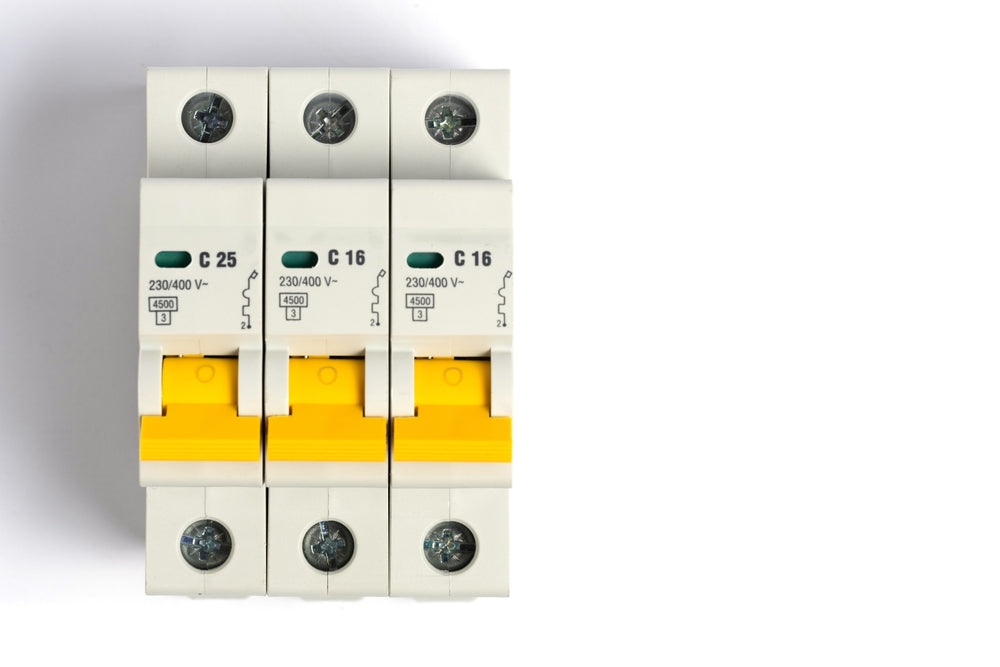
Electricity powers our homes, offices, and everything in between. But when something goes wrong like an overload or short circuit circuit breakers are the silent protectors that prevent damage, fires, or worse. While they often sit unnoticed in our electrical panels, they’re one of the most crucial safety devices in any building.
Yet, not all circuit breakers are the same. There are several types, each designed for specific scenarios and environments. In this guide, we’ll explore the most common circuit breaker types, what sets them apart, and how to choose the right one for your application.
What Is a Circuit Breaker and Why Does It Matter?
The First Line of Electrical Defense
At its core, a circuit breaker is a safety switch. It automatically cuts off power when it detects a problem in the electrical system whether that’s an overload, short circuit, or ground fault. Unlike fuses, circuit breakers can be reset rather than replaced, making them more convenient and cost-effective over time.
Protecting More Than Just Wires
Circuit breakers don’t just prevent wiring from overheating. They also shield your appliances, lighting systems, and even your family from electrical dangers. From keeping your microwave safe to preventing house fires, a breaker plays a crucial role in your everyday safety.
Common Types of Circuit Breakers
1. Miniature Circuit Breakers (MCBs)
Miniature Circuit Breakers are the most commonly used breakers in residential settings. They protect circuits from overloads and short circuits and are available in different trip curves (B, C, D) depending on the nature of the connected load.
-
Type B: Trips between 3-5x full load current (ideal for lighting and home appliances).
-
Type C: Trips between 5-10x (used for motors, HVACs).
-
Type D: Trips between 10-20x (for large motors, industrial use).
2. Molded Case Circuit Breakers (MCCBs)
MCCBs are used in commercial and industrial settings. They support higher currents (up to 2500A) and offer adjustable trip settings, making them more versatile than MCBs. MCCBs are suitable for machinery, commercial panels, and large backup generators.
Specialty Circuit Breakers
3. Residual Current Circuit Breakers (RCCBs)
Also known as Earth Leakage Circuit Breakers, RCCBs protect against electric shocks. They monitor the balance between live and neutral currents. When a leakage (such as through a human body) is detected, the breaker trips instantly.
RCCBs are not designed to handle overloads they’re used alongside MCBs.
4. Ground Fault Circuit Interrupters (GFCIs)
GFCIs are the American equivalent of RCCBs and are often used in kitchens, bathrooms, and outdoor areas. They trip when even a small leakage is detected (as low as 5mA), offering high protection in wet environments.
GFCIs are required by code in many regions for outlets near water sources.
How Circuit Breakers Work: A Quick Look Inside
The Magic of Thermal and Magnetic Tripping
Most circuit breakers use a thermal (heat-based) and magnetic (current-based) tripping mechanism. When current exceeds a safe threshold:
-
The thermal element bends and trips the breaker (for overloads).
-
A magnetic coil pulls the switch open instantly (for short circuits).
This dual-action mechanism ensures both slow buildup issues and sudden faults are effectively managed.
Resetting the Breaker
After tripping, a breaker can usually be reset by flipping the switch back. However, if it trips repeatedly, that’s a warning sign something may be wrong with your wiring or connected device.
Applications: Where Each Breaker Type Belongs
Residential Settings
For homes, MCBs (Type B or C) and RCCBs are ideal. Your home’s distribution board typically includes:
-
MCBs for lighting, appliances, and outlets
-
RCCB or GFCI for bathroom, kitchen, and outdoor areas
-
SPD (Surge Protection Device) for voltage spikes (optional but highly recommended)
Always ensure your total load and wire gauge align with the breaker size.
Commercial and Office Spaces
In commercial buildings, MCCBs take over where MCBs fall short. These are often used to:
-
Protect HVAC systems
-
Manage main supply panels
-
Safeguard large networks of lighting and office equipment
RCCBs or GFCIs are still necessary for washrooms and kitchens within office buildings.
Industrial and Specialized Environments
For factories, workshops, and large machinery setups, Type D MCBs, MCCBs, and special protection relays are essential. They prevent unnecessary trips during motor startups while still protecting equipment from damage.
Industries often use air circuit breakers (ACBs) and vacuum circuit breakers (VCBs) for even higher voltage and current levels.
Choosing the Right Circuit Breaker: Factors to Consider
Load Calculation and Type
Start with a simple question: what are you protecting? Is it a computer, a motor, or an entire building? Calculate the full load current and choose a breaker rated 10–20% higher to handle temporary surges.
Voltage and Frequency Ratings
Make sure the breaker supports your system’s voltage (110V, 220V, 440V) and frequency (usually 50Hz or 60Hz). Incorrect ratings can reduce performance and lifespan.
Environmental Considerations
If you're installing a breaker in a damp or outdoor location, choose weatherproof or enclosed units. For dusty or corrosive areas (like workshops), sealed and industrial-grade units are more suitable.
Maintenance and Safety Tips
Regular Checks Matter
While breakers are built to last, they should still be tested periodically. GFCIs should be tested monthly using their "Test" button. Visual inspections for burn marks, loose wiring, or noise are equally important.
Never Oversize Breakers
Don’t be tempted to install a higher-rated breaker “just in case.” Oversized breakers won’t trip during a real fault, which could cause fires or equipment damage. Always match the breaker to the wire gauge and load.
Final Thoughts: The Right Breaker Is a Smart Investment
A circuit breaker might seem like a small component in your electrical system, but it plays a big role in protecting everything else. The key is choosing the right type for your space, load, and level of sensitivity.
When in doubt, consult a licensed electrician or electrical engineer. Because at the end of the day, safety is priceless and a well-chosen circuit breaker gives you both peace of mind and power that works the way it should.








